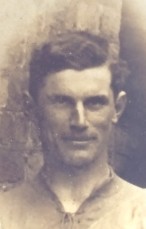Michael Hogan and Bloody Sunday, 1920
 November of course is a month connected to Bloody Sunday in 1920, one of the worst days of violence during the War of Independence. It commenced with the shooting dead of thirteen British intelligence officers, known as the Cairo Gang. It ended with the execution of three IRA volunteers that evening. In between the British military raided Croke Park where fourteen people were shot dead, including the Tipperary footballer, Michael Hogan. Today, the Hogan Stand in Croke Park is named in his honour. Eight years after Bloody Sunday an event was held in Hogan’s native place, Grangemockler, county Tipperary. Here the Irish Independent reported that:
November of course is a month connected to Bloody Sunday in 1920, one of the worst days of violence during the War of Independence. It commenced with the shooting dead of thirteen British intelligence officers, known as the Cairo Gang. It ended with the execution of three IRA volunteers that evening. In between the British military raided Croke Park where fourteen people were shot dead, including the Tipperary footballer, Michael Hogan. Today, the Hogan Stand in Croke Park is named in his honour. Eight years after Bloody Sunday an event was held in Hogan’s native place, Grangemockler, county Tipperary. Here the Irish Independent reported that:
Under the shadow of Slievenamon, in the cemetery of the little parish church of Grangemockler, a monument, erected by the G.A.A. was yesterday unveiled to the memory of Michael Hogan (brother of Maj-Gen. D. Hogan), who was shot dead in Croke Park on Bloody Sunday, Nov. 21, 1920. In the unavoidable absence of Mr. Scan Ryan, President, the unveiling ceremony wild performed by Mr.. John Clifford (Limerick), ex-President of the G.A.A. Gaels from all over Tipperary and South Kilkenny attended, notwithstanding the downpour of rain which continued from early morning…
Mr. Clifford in his oration said the bullets of the Sassanach had engraved with his blood the memory of Michael Hogan on the sod of Croke Park. Those who favoured a spurious internationalism he would ask to remember the internationalism shown in Croke Park on Bloody Sunday. What happened then would be remembered while the G.A.A. had a memory in Ireland.
That Association was founded to build up a clean-souled and clean-bodied band of Irishmen, and when the call of country came in the dark days of 1919, 1920, and 1921, the men of the G.A.A. wero not lacking in their duty In motherland…..
For more on the commemoration of Bloody Sunday through the years, search the pages of the Irish Newspaper Archive (www.irishnewsarchive.com )